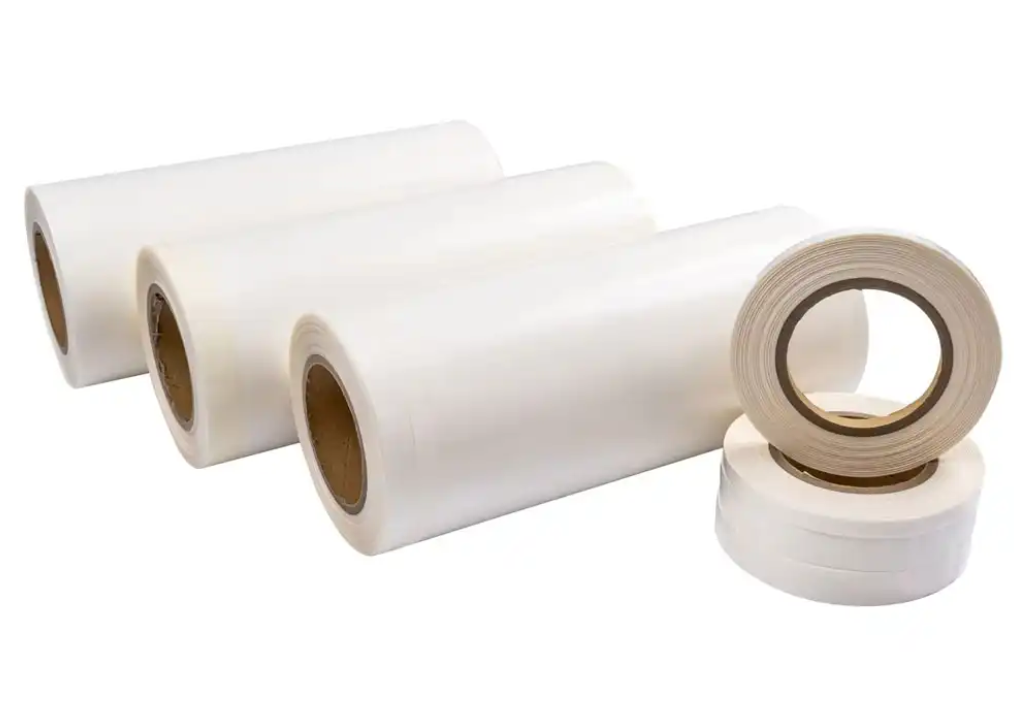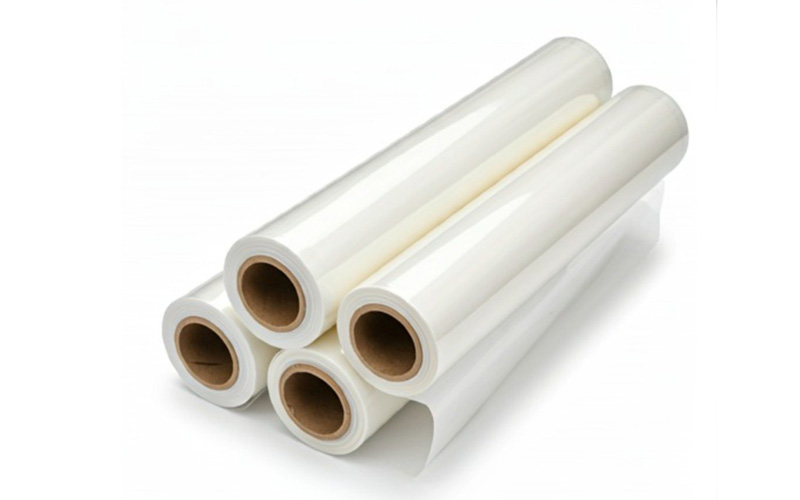Hot melt adhesive films have become indispensable in various industries such as packaging, automotive, electronics, textiles, and woodworking. These films provide fast, strong, and durable bonding solutions with excellent heat-activated properties. If you are in the market looking for reliable hot melt film manufacturers, this comprehensive guide will help you understand the industry landscape, product types, manufacturing processes, quality considerations, and how to select the right supplier for your business.

1. What Are Hot Melt Films?
Hot melt films, also known as heat-activated adhesive films or hot melt adhesive films, are solid adhesive films that become tacky and melt when heated, allowing them to bond surfaces firmly. Unlike liquid adhesives, hot melt films offer a clean, precise, and easy-to-handle solution for bonding applications.
These films typically consist of a thermoplastic polymer base combined with tackifiers, plasticizers, and stabilizers to enhance adhesion, flexibility, and heat resistance.
2. Applications of Hot Melt Films
Hot melt films serve a wide range of industrial applications, including:
Packaging: Sealing cartons, laminating films, and bonding multi-layer packaging.
Automotive: Attaching interior panels, trim parts, and insulation layers.
Textiles: Laminating fabrics, bonding interlinings, and reinforcing materials.
Electronics: Securing components and insulating layers.
Woodworking: Veneer bonding, furniture assembly, and edge banding.
Medical: Creating disposable products and medical textiles.
Their fast setting time, durability, and ease of automation make hot melt films a preferred choice across these sectors.
3. Overview of Hot Melt Film Manufacturers Industry
The hot melt film manufacturers market is diverse and competitive, comprising specialized adhesive producers, chemical companies, and industrial film manufacturers. Leading manufacturers focus on innovation, customization, and compliance with industry standards.
3.1 Geographic Distribution
Asia-Pacific: Countries like China, South Korea, Japan, and India dominate production, offering cost-effective solutions.
Europe: Germany, Italy, and the UK have advanced manufacturers known for high-performance films and R&D capabilities.
North America: The USA and Canada focus on specialized and environmentally friendly hot melt films.
3.2 Market Trends
Growing demand for eco-friendly, solvent-free, and low VOC hot melt films.
Increasing use of bio-based and recyclable materials.
Development of films with enhanced heat resistance and flexibility.
Expansion of automated production lines requiring customized adhesive films.
4. Types of Hot Melt Films Offered by Manufacturers
Choosing the right type of hot melt film depends on your specific application needs. Common types include:
4.1 EVA-Based Hot Melt Films
Ethylene-vinyl acetate (EVA) is a widely used polymer base offering good adhesion, flexibility, and cost-effectiveness. EVA-based films are popular in packaging and textile bonding.
4.2 Polyamide (PA) Hot Melt Films
Polyamide hot melt films provide excellent heat and chemical resistance, ideal for automotive and electronics industries.
4.3 Polyurethane (PU) Hot Melt Films
PU films offer superior elasticity and durability, commonly used in medical applications and high-performance textiles.
4.4 Polyolefin (PO) Hot Melt Films
These films deliver strong adhesion and high thermal stability, often used in woodworking and lamination.
4.5 Reactive Hot Melt Films
Reactive hot melt films cure chemically after application, providing high strength and resistance, suitable for demanding industrial bonding.

5. Key Factors to Consider When Choosing a Hot Melt Film Manufacturer
When selecting among hot melt film manufacturers, it is crucial to evaluate several factors to ensure quality and reliability:
5.1 Product Quality and Certification
Look for manufacturers who comply with international standards such as ISO 9001, ASTM, or REACH. Certifications ensure product consistency, safety, and environmental compliance.
5.2 Customization and Technical Support
Your application might require specific film thickness, adhesion levels, or curing times. Choose manufacturers who offer tailored solutions and responsive technical assistance.
5.3 Production Capacity and Lead Time
Assess whether the manufacturer can handle your order volume with timely delivery, especially for large-scale or urgent projects.
5.4 R&D Capabilities
Manufacturers investing in research and development can provide innovative hot melt films that keep you ahead in the market.
5.5 Price Competitiveness
Balance cost with quality. The cheapest option may compromise performance, while premium products should deliver value for money.
6. How Hot Melt Films Are Manufactured
Understanding the manufacturing process helps in assessing the capabilities of hot melt film manufacturers:
Raw Material Selection: Choosing high-quality polymers and additives.
Melting and Mixing: Raw materials are melted and mixed uniformly in extruders.
Film Extrusion: The hot melt adhesive is extruded through flat dies to form continuous films.
Cooling and Winding: The film is cooled on rollers and wound into rolls.
Slitting and Packaging: Rolls are slit into desired widths and packaged for shipment.
Manufacturers with advanced extrusion lines and quality control labs can deliver consistent films with superior performance.
7. Advantages of Buying from Established Hot Melt Film Manufacturers
Consistent Adhesion Strength: Ensures reliable bonding in your final products.
Custom Solutions: Tailored adhesive formulations for niche applications.
Regulatory Compliance: Meets environmental and safety regulations.
Technical Consultation: Guidance on film selection and application methods.
After-Sales Support: Assistance with troubleshooting and reordering.
8. Challenges in the Hot Melt Film Market
Raw Material Price Volatility: Polymer costs fluctuate affecting product pricing.
Environmental Regulations: Increasing pressure to reduce VOCs and hazardous substances.
Quality Variation: Choosing unreliable suppliers can lead to inconsistent product performance.
Technological Barriers: Keeping up with rapid innovations requires continual investment.
9. How to Request Quotes and Samples from Hot Melt Film Manufacturers
A practical approach to sourcing includes:
Prepare Detailed Requirements: Film thickness, adhesive type, application, temperature range, etc.
Contact Multiple Suppliers: Use platforms like Alibaba, Global Sources, or direct manufacturer websites.
Request Samples: Evaluate bonding performance before bulk purchase.
Compare Quotes: Include shipping costs, taxes, and lead times.
Check References and Reviews: Validate supplier credibility.
10. Tips for Working Successfully with Hot Melt Film Manufacturers
Establish Clear Communication: Ensure specifications and expectations are well-documented.
Plan for Testing: Conduct lab and field tests with provided samples.
Negotiate Terms: Discuss payment, warranty, and return policies upfront.
Monitor Quality: Periodically audit production batches to maintain standards.
Build Long-Term Partnerships: Reliable manufacturers add value beyond just selling products.
11. Future Outlook for Hot Melt Film Manufacturing
As sustainability trends accelerate, expect manufacturers to innovate:
Developing bio-based hot melt films
Enhancing recyclability and biodegradability
Improving energy efficiency in production
Integrating smart adhesives with sensors and electronics
Choosing a forward-thinking hot melt film manufacturer will prepare your business for future challenges and opportunities.

Conclusion
Selecting the right hot melt film manufacturers is critical for your product’s success. By understanding the types of hot melt films, industry trends, manufacturing processes, and evaluating suppliers carefully, you can ensure you get the best quality adhesive films at competitive prices.
Remember, the ideal manufacturer offers a balance of product quality, technical expertise, reliable delivery, and cost efficiency. Whether you operate in packaging, automotive, textile, or electronics, investing time in choosing the right hot melt film partner will pay dividends in product performance and customer satisfaction.
